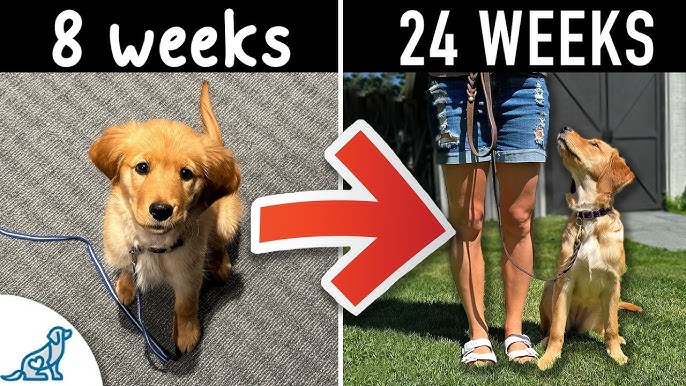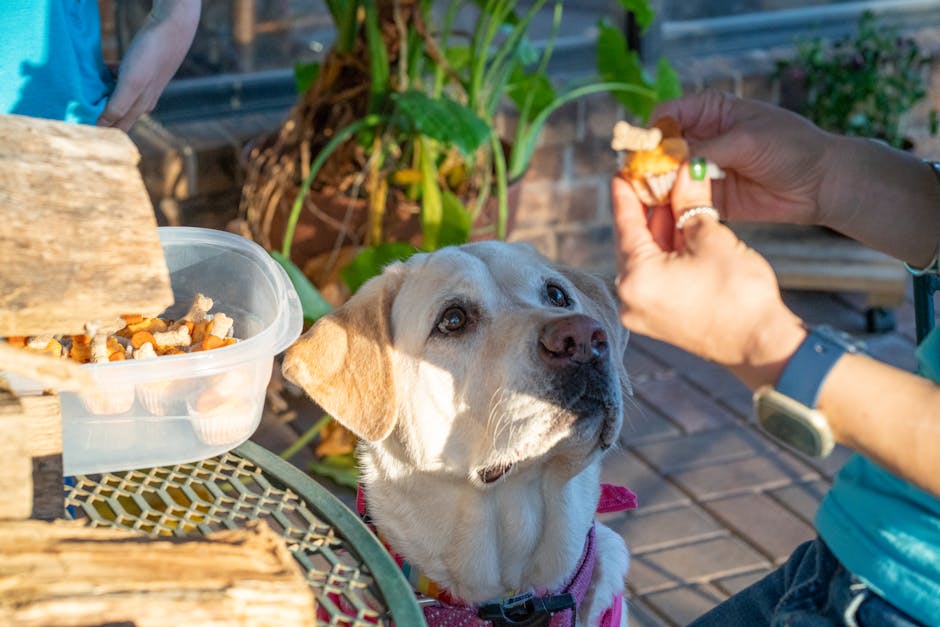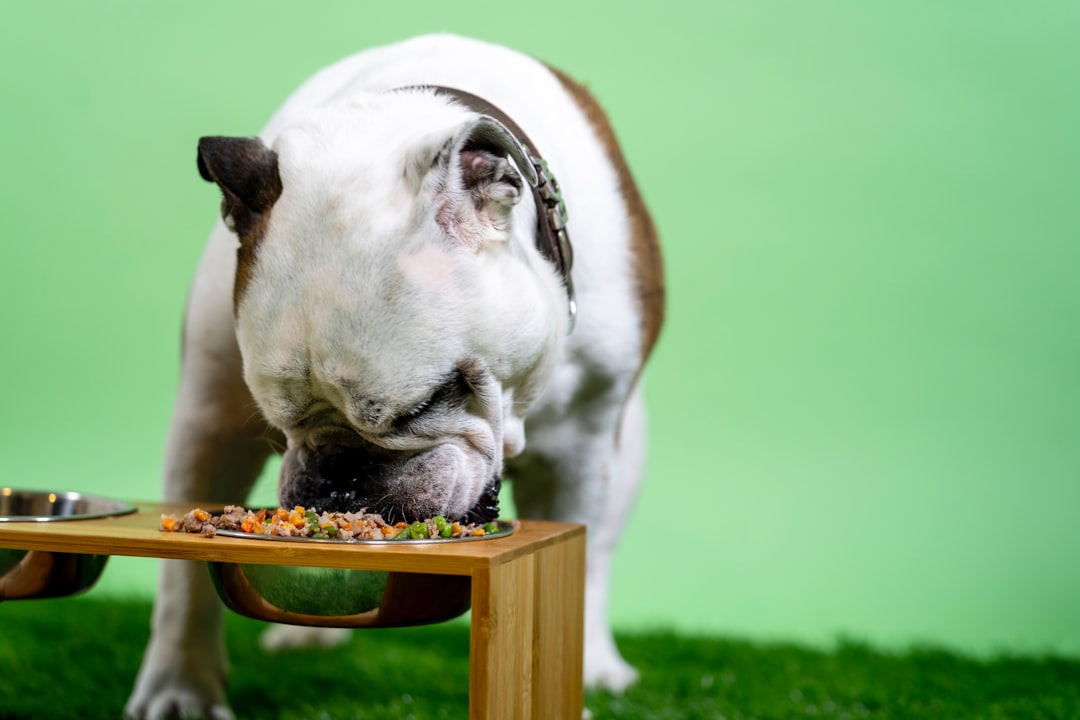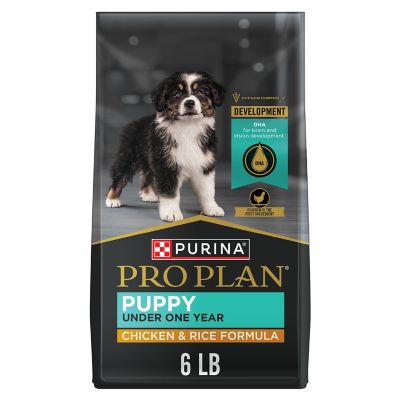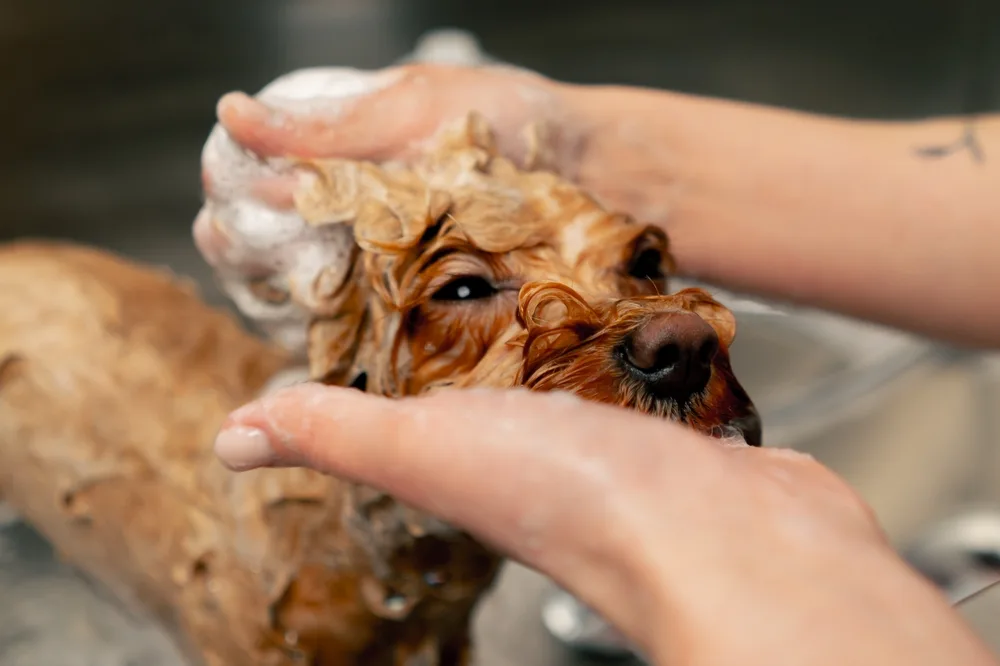If you have a hypoallergenic dog, you probably want to keep them clean without causing skin problems. But how often should you actually bathe your furry friend?
Bathing too often can dry out their skin, while not bathing enough might leave them smelly or itchy. Finding the right balance is key to keeping your dog healthy and happy. You’ll discover exactly how often you should bathe your hypoallergenic dog and learn tips to make bath time easier for both of you.
Keep reading to give your pet the best care they deserve!

Credit: squishface.com
Hypoallergenic Dog Traits
Hypoallergenic dogs are breeds that cause fewer allergic reactions. They shed less hair and dander.
Bathing these dogs properly helps keep allergies under control. It also keeps their coat clean and healthy.
Coat Types And Allergies
Hypoallergenic dogs have different coat types. Some have curly hair, others have hair like human hair.
Coat type affects how often you should bathe your dog. Curly coats trap oils and dirt, needing more care.
- Curly coats need baths every 3 to 4 weeks
- Straight, hair-like coats need baths every 4 to 6 weeks
- Regular brushing reduces allergens and dirt
Common Hypoallergenic Breeds
Some dog breeds are known to be hypoallergenic. They shed less and produce less dander.
- Poodle – curly coat, low shedding
- Bichon Frise – soft, curly hair
- Maltese – long, silky coat
- Schnauzer – wiry coat, sheds little
- Portuguese Water Dog – curly, dense coat
Bathing these breeds regularly helps reduce allergens and keeps their coat fresh.
Bathing Frequency Factors
Bathing a hypoallergenic dog requires special care. The frequency depends on several factors.
Understanding these factors helps keep your dog clean without harming its skin.
Skin Sensitivity
Hypoallergenic dogs often have sensitive skin. Bathing too often can dry their skin out.
Use gentle shampoos made for sensitive skin to avoid irritation or redness.
- Bathing once every 3 to 4 weeks is usually safe
- Check your dog’s skin for dryness or irritation
- Consult a vet if your dog has skin problems
Activity Level
Active dogs get dirtier faster. They may need baths more often than less active dogs.
If your dog plays outside daily, washing every 2 to 3 weeks helps keep them clean.
- Less active dogs can be bathed less frequently
- More active dogs might need baths every 1 to 2 weeks
- Use wipes or spot clean between baths to stay fresh
Environment Impact
The place where your dog lives affects bath needs. Dusty or muddy areas cause more dirt.
Indoor dogs usually stay cleaner and need fewer baths than outdoor dogs.
- Dogs in rural or muddy places need more frequent baths
- Urban dogs may need fewer baths if they stay mostly indoors
- Consider weather changes that increase dirt and allergens
Recommended Bathing Schedules
Bathing a hypoallergenic dog helps keep its skin clean and healthy. The right schedule depends on the dog’s needs and lifestyle.
Too frequent baths can dry the skin. Too few baths can cause dirt and oil buildup. Find a balance that works for your dog.
Weekly Options
Some hypoallergenic dogs need a bath every week. This is common for dogs that spend time outside or have oily skin.
Weekly baths help remove allergens and dirt. Use a gentle, hypoallergenic shampoo to avoid irritation.
- Keep water warm and comfortable
- Rinse shampoo well to avoid residue
- Dry the dog thoroughly after bathing
Biweekly Options
Bathing every two weeks suits many hypoallergenic dogs. It is enough to keep them clean without drying their skin.
This schedule works well for dogs that spend more time indoors and have normal skin. Watch for signs of itchiness or odor.
- Use mild shampoo designed for sensitive skin
- Brush the dog between baths to remove loose hair
- Check skin regularly for irritation or dryness
Seasonal Adjustments
Bathing frequency may change with the seasons. Dogs often need more baths in warmer months.
During spring and summer, dogs may get dirtier and sweat more. In winter, baths can be less frequent to protect dry skin.
- Increase baths slightly in spring and summer
- Use moisturizing shampoo in dry winter months
- Adjust based on your dog’s activity and coat condition
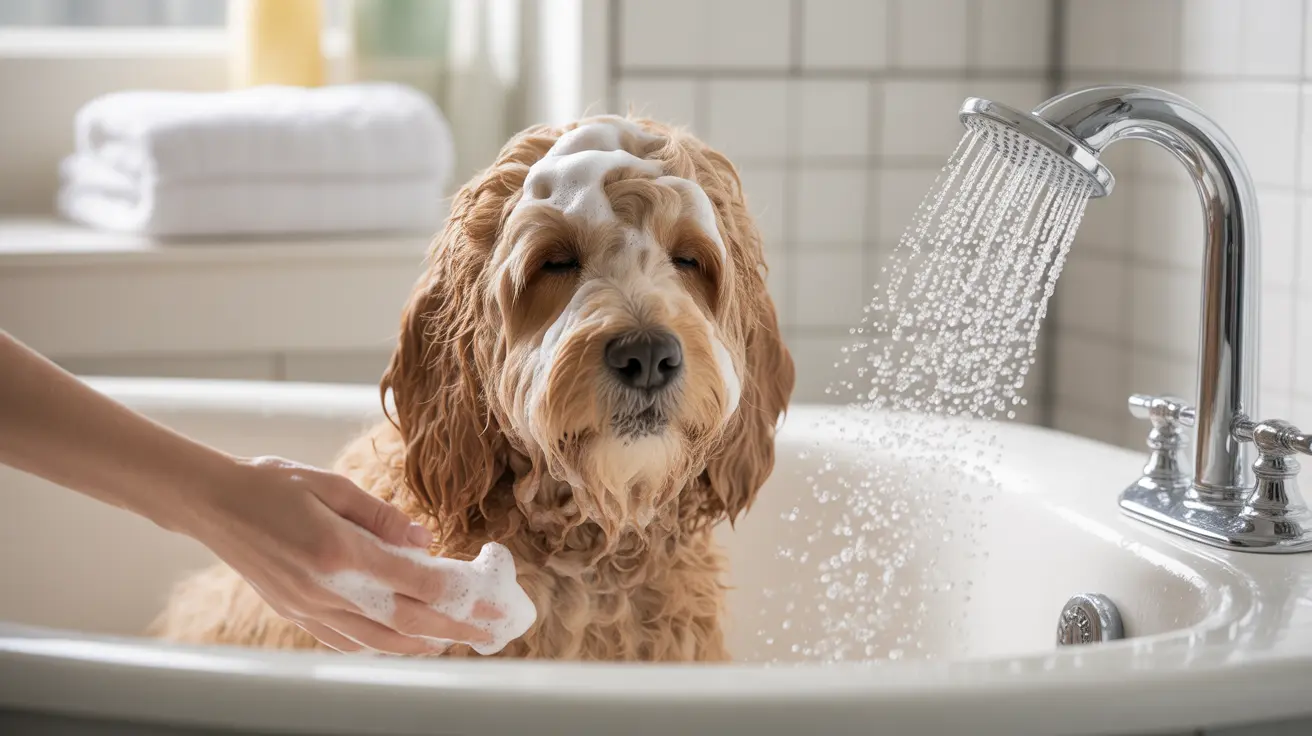
Credit: www.petscare.com
Choosing The Right Shampoo
Bathing a hypoallergenic dog needs special care. Picking the right shampoo helps keep their skin safe.
Some shampoos clean well but can irritate sensitive skin. Choosing gentle ingredients protects your dog’s coat.
Ingredients To Avoid
Many shampoos have chemicals that can harm your hypoallergenic dog’s skin. Avoid these to prevent itching or dryness.
- Sulfates: These can strip natural oils from the skin.
- Parabens: Used as preservatives but may cause allergies.
- Fragrances: Artificial scents can irritate sensitive skin.
- Alcohol: Dries out skin and fur.
- Phthalates: Chemicals linked to skin reactions.
Best Hypoallergenic Shampoos
Look for shampoos with natural, mild ingredients. They clean well without causing irritation or dryness.
- Oatmeal-based shampoos: Soothes and moisturizes skin.
- Aloe vera shampoos: Calms irritation and adds moisture.
- Coconut oil shampoos: Gentle cleansing and skin nourishment.
- Chamomile shampoos: Helps reduce redness and itchiness.
- Shampoos free from dyes and artificial scents: Less risk of allergies.
Bathing Techniques
Bathing a hypoallergenic dog needs care and gentle handling. Using the right techniques helps protect their sensitive skin.
Good bathing practices keep your dog clean without causing irritation or dryness. Let’s explore how to bathe your dog safely.
Proper Water Temperature
Water that is too hot or cold can upset your dog’s skin. Use warm water to make bathing comfortable.
Test the water on your wrist before starting. It should feel warm but not hot to avoid burns or chills.
- Warm water helps open pores for better cleaning
- Cold water may cause discomfort or stress
- Too hot water can dry out the skin
Gentle Washing Tips
Use a mild shampoo made for hypoallergenic dogs to avoid irritation. Avoid harsh soaps and chemicals.
Apply shampoo softly using your hands. Massage gently to clean without scratching or hurting the skin.
- Use a hypoallergenic shampoo with natural ingredients
- Massage shampoo in circular motions to avoid irritation
- Rinse thoroughly to remove all shampoo residues
- Avoid the eyes and inside ears while washing
Drying Methods
Dry your dog carefully after the bath. Use a soft towel to absorb water first.
If you use a hairdryer, keep it on low heat and low speed. Keep the dryer moving to avoid overheating any spot.
- Pat the dog gently with a soft towel
- Use a hairdryer only on low heat and speed
- Keep hairdryer 10-12 inches away from skin
- Never rub vigorously to prevent skin damage
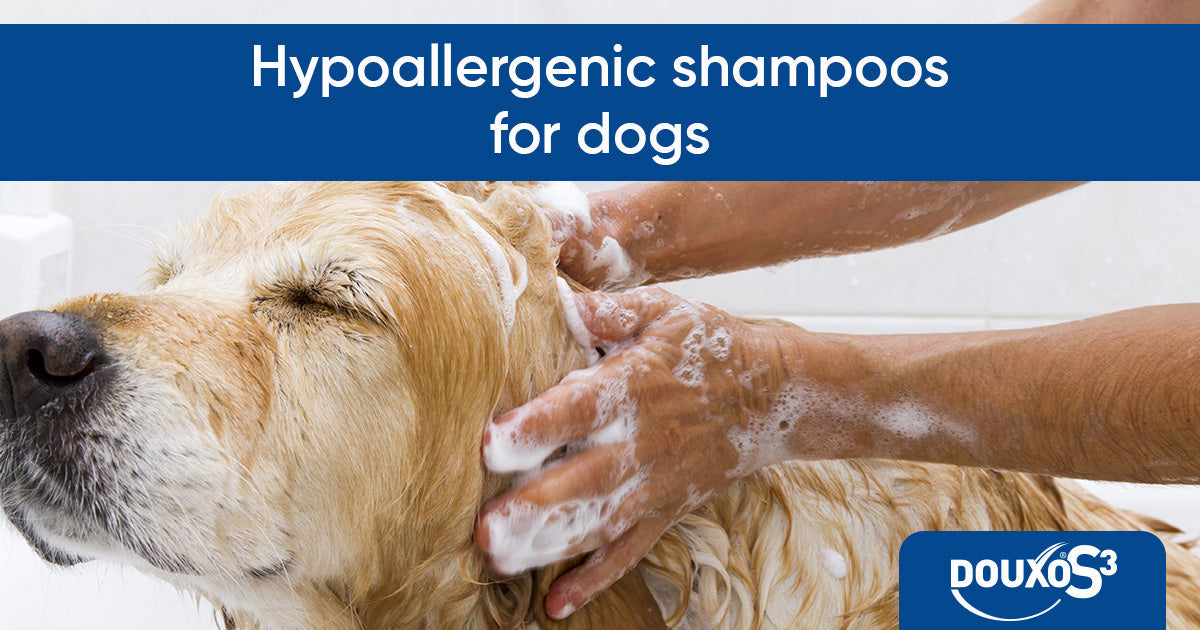
Credit: douxo.de
Signs Of Overbathing
Bathing a hypoallergenic dog too often can harm its skin and coat. It removes natural oils that keep the fur healthy.
Watch for signs your dog is overbathed. These signs help you know when to cut back on baths.
Dry Skin Symptoms
Dry skin is a common result of overbathing. Your dog’s skin may look flaky or cracked.
Dry skin can cause itching and discomfort. The coat may look dull instead of shiny.
- Flaky or scaly skin patches
- Red or irritated skin spots
- Increased scratching or licking
- Coat looks dull and rough
Behavioral Changes
Your dog may act different if overbathed. It might seem more restless or uncomfortable.
Look for signs like increased scratching or avoiding touch. These can mean the skin feels sore or tight.
- More scratching and biting at skin
- Restlessness or difficulty settling down
- Avoiding petting or grooming
- Whining or signs of discomfort
Additional Skin Care Tips
Bathing a hypoallergenic dog is important, but skin care goes beyond just washing. Good daily habits help keep your dog’s skin healthy and comfortable.
Using gentle care and paying attention to your dog’s needs supports their sensitive skin. Simple steps can make a big difference.
Brushing And Grooming
Regular brushing removes dirt and loose hair from your dog’s coat. It also helps spread natural oils that keep skin moist and healthy.
Choose a brush that fits your dog’s hair type. Brush gently to avoid irritating the skin.
- Brush at least twice a week for short hair dogs
- Brush daily for long or curly hair breeds
- Check for signs of irritation or dryness during grooming
- Use hypoallergenic grooming products to avoid reactions
Diet And Hydration
A healthy diet supports your dog’s skin from the inside out. Nutrients like omega-3 fatty acids help reduce inflammation and dryness.
Fresh water keeps your dog hydrated. Proper hydration helps maintain skin elasticity and prevents itching.
- Feed a balanced diet with quality proteins and fats
- Include foods rich in omega-3 and omega-6 fatty acids
- Provide clean, fresh water at all times
- Consult your vet about supplements for skin health
Frequently Asked Questions
How Often Should I Bathe A Hypoallergenic Dog?
Bathe your hypoallergenic dog every 4 to 6 weeks. This routine helps maintain their skin health and coat condition. Regular grooming in between baths will also reduce allergens. Always use a dog-specific shampoo to avoid skin irritation.
Can Hypoallergenic Dogs Cause Allergies?
Hypoallergenic dogs can still cause allergies, but they produce fewer allergens. Regular grooming and cleaning reduce allergen levels. Consult with an allergist if symptoms persist. Choosing the right breed and maintaining cleanliness can minimize allergic reactions.
Is Daily Bathing Bad For Hypoallergenic Dogs?
Daily bathing can strip natural oils from your dog’s skin. This can cause dryness and irritation. Limit baths to every 4 to 6 weeks. Use moisturizing dog shampoos to maintain skin health and coat condition.
What Grooming Tools Are Best For Hypoallergenic Dogs?
Use a slicker brush and a wide-toothed comb for grooming hypoallergenic dogs. Regular brushing removes loose hair and reduces allergens. A de-shedding tool can also help manage shedding. Grooming maintains coat health and minimizes allergy triggers.
Conclusion
Bathing a hypoallergenic dog too often can dry their skin. Aim for a bath every 3 to 4 weeks. Use gentle shampoos made for sensitive skin. Keep your dog clean but avoid over-washing. Regular brushing helps reduce dirt and allergens.
Pay attention to your dog’s coat and skin health. Adjust the bath frequency if you notice irritation. Clean dogs stay happy and comfortable. A balanced bath routine supports their well-being. Simple care keeps your hypoallergenic dog healthy and fresh.


